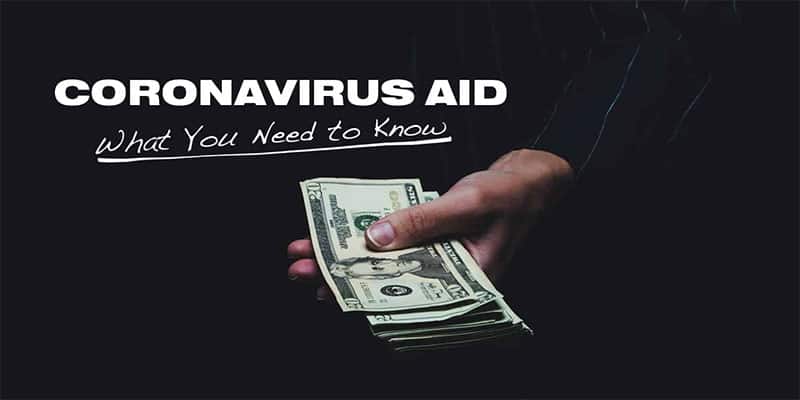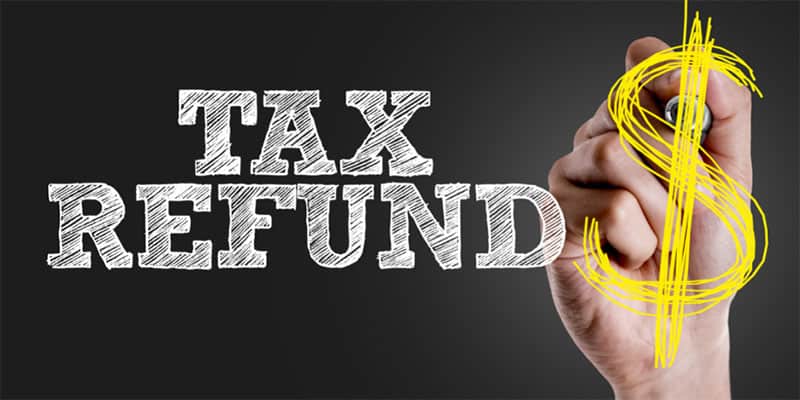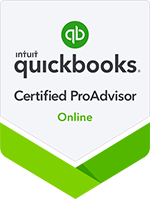Update as of 7/6/20
The PPP loan program has been extended five weeks – until August 8 so if you are still interested in applying it is not too late. Congress is going to convene later this month to figure out the next steps in relief. Stay tuned…
PPP Loan Forgiveness Rules as of 6/29/20
The rules continue to change on the PPP loan program. The next round of meetings in Congress to discuss the program are scheduled for after the July 4 holiday. Please reach out to your RYBD contact for any clarification or further questions. We continue to monitor the guidance in order to provide the most up to date information.[/vc_column_text][vc_column_text]
In this uncertain time legislation is being issued daily and it is overwhelming to say the least. We understand that this is extremely stressful and we are here to help. Please review the information below and consider how these various pieces of legislation relate to your individual facts and circumstances as each business has its own unique situation. If you have additional questions please contact us.
[/vc_column_text][vc_tta_accordion style=”modern” active_section=”100″ collapsible_all=”true”][vc_tta_section title=”When can I apply for loan forgiveness?” tab_id=”1593703614008-ae16108d-f905″][vc_column_text]The revised loan application published by the SBA under the PPP Flexibility Act issued June 5, 2020 specifies that either the original 8 week period can be used for the covered period or a 24 week period can be used if the loan proceeds were obtained prior to June 5, 2020. The borrowers who received the loan proceeds after 6/5/20 can no longer use the 8 week period for the covered period.
The longer period brought concern to some since the FTE rules were still in place. Some borrowers were concerned that they might have a FTE reduction between June 30 and December 31 resulting in a reduction in their loan forgiveness.[/vc_column_text][/vc_tta_section][vc_tta_section title=”A new ruling was released on 6/22/20 which states that borrowers do not have to wait for the 24 week period to pass and can apply as soon as the funds are expended. Here is an excerpt from the 6/22/20 ruling:” tab_id=”1593703614113-ff34d9b1-0ffa”][vc_column_text]“A borrower may submit a loan forgiveness application any time on or before the maturity date of the loan – including before the end of the covered period – if the borrower has used all of the loan proceeds for which the borrower is requesting forgiveness. If the borrower applies for forgiveness before the end of the covered period and has reduced any employee’s salaries or wages in excess of 25 percent, the borrower must account for the excess salary reduction for the full 8-week or 24-week covered period.”[/vc_column_text][/vc_tta_section][vc_tta_section title=”How does the 25% reduction work?” tab_id=”1593703614194-3442e8d6-bdd5″][vc_column_text]The example in the guidance is as follows:
“A borrower is using a 24-week covered period. This borrower reduced a full-time employee’s weekly salary from $1,000 per week during the reference period to $700 per week during the covered period. The employee continued to work on a full-time basis during the covered period, with an FTE of 1.0. In this case, the first $250 (25 percent of $1,000) is exempted from the loan forgiveness reduction. The borrower seeking forgiveness would list $1,200 as the salary/hourly wage reduction for that employee (the extra $50 weekly reduction multiplied by 24 weeks). If the borrower applies for forgiveness before the end of the covered period, it must account for the salary reduction for the full 24-week covered period (totaling $1,200).”[/vc_column_text][/vc_tta_section][vc_tta_section title=”What are the compensation limits under the 24 week period?” tab_id=”1593704031502-cfeca05c-bebf”][vc_column_text]Employees are capped at $100,000 annualized ($46,154 over the 24 week period)
Owners are capped at 2.5 months’ worth of net profit (2.5/12) of 2019 profit – capped at $20,833 for the 24 week period, excluding any sick leave credit taken under the Families First Coronavirus Response Act.[/vc_column_text][/vc_tta_section][vc_tta_section title=”How long will it take to get approval of my forgiveness application?” tab_id=”1593704068242-289248ad-25a7″][vc_column_text]Lenders have up to 60 days from receipt of loan forgiveness applications to approve loan forgiveness applications. The SBA then has 90 days to approve. The process could be shorter but it could be up to 5 months before final forgiveness approval is obtained.[/vc_column_text][/vc_tta_section][vc_tta_section title=”What are my loan forgiveness application options?” tab_id=”1593704103916-d20f8a22-e036″][vc_column_text]Borrowers can file a loan forgiveness application (see link here) or a 3508EZ (see link here). The 3508EZ only requires the calculation of payroll costs and nonpayroll costs. If you meet the criteria below there is no need for the FTE or the salary reduction computation.
In order to file the 3508EZ borrowers must meet the following criteria:
- Must be a self-employed individual, independent contractor, or sole proprietor who had no employees at the date of the PPP loan application and did not include any employee salaries in the computation of average monthly payroll in the Borrower Application Form.
- Borrower did not reduce annual salary or hourly wages of any employee by more than 25% during the covered period or alternative covered period compared to the period 1/1/20-3/31/20 (limited to annual rate of pay of $100,000) AND
Borrower did not reduce the number of employees or the average paid hours of employees between 1/1/20 and end of covered period.
Note – IGNORE reduction if reductions arose from inability to rehire workers employed on 2/15/20, if Borrower was unable to hire similarly qualified employees for unfilled positions on or before 12/31/20, OR Borrower offered to restore hours if the employee refused.
- Borrower did not reduce annual salary or hourly wages of any employee by more than 25% during the covered period or alternative covered period compared to the period between 1/1/20 and 3/31/20 (limited to annual rate of pay of $100,000) AND
- Borrower was unable to operate during the covered period at the same level of business activity as before 2/15/20 due to compliance with requirements established between 3/1/20 and 12/31/20 by the Secretary of Health and Human Services, CDC, or OSHA, related to maintenance of standards of sanitation, social distancing, or any other work or customer safety requirement related to COVID-19.
[/vc_column_text][/vc_tta_section][vc_tta_section title=”What % of proceeds from PPP loans must be spent on payroll?” tab_id=”1593704142458-dc6e5a6b-6aac”][vc_column_text]With the latest guidance the % that must be spent on payroll is 60% of the funds received.[/vc_column_text][/vc_tta_section][vc_tta_section title=”What are the current safe harbors in place regarding the FTE (full-time employee) reduction calculation:” tab_id=”1593704187227-7d519a51-469f”][vc_column_text]
- If you were unable to operate between February 15, 2020, and the end of the Covered Period at the same level of business activity as before February 15, 2020 due to compliance with requirements established or guidance issued between March 1, 2020 and December 31, 2020, by the Secretary of Health and Human Services, the Director of the Centers for Disease Control and Prevention, or the Occupational Safety and Health Administration related to the maintenance of standards for sanitation, social distancing, or any other worker or customer safety requirement related to COVID-19, the FTE reduction calculation need not be performed.
- If a borrower lays off an employee and offered to rehire the employee but the employee declines the offer.
Note – There must be a good faith written offer of rehire and rejection of that offer must be documented by the borrower. Also note that the employees who reject the offer are no longer eligible for unemployment insurance benefits.
- If the Borrower reduced its FTE count in the period from 2/15/20-4/26/20 and the Borrower restored its FTE count by not later than 12/31/20 to its FTE levels that were in place on 2/15/20 then no reduction is required.
[/vc_column_text][/vc_tta_section][vc_tta_section title=”Will I have to pay interest on the forgiven loan amount?” tab_id=”1593704227677-c5c353ea-84a1″][vc_column_text]No, for any portion of loan forgiveness, the pro-rata associated interest will be forgiven as well.[/vc_column_text][/vc_tta_section][vc_tta_section title=”I am self-employed. What are considered my payroll costs and nonpayroll costs?” tab_id=”1593704263926-1747f23a-ed05″][vc_column_text]Payroll costs
If you have no W-2 employees and file a Schedule C,
8 week period- 2019 Schedule C Line 31 (net profit) divided by 52 and multiplied by 8 (capped at $100,000 annualized pay which for 8 weeks Is $15,385) OR
24 week period – 2.5 months’ worth of 2019 net profit (up to $20,833)
Note- employer health insurance contributions and employer retirement contributions made on behalf of self-employed individual or general partners CANNOT be included because these payments are already included in their compensation.
Nonpayroll costs
Borrower must have claimed or be entitled to claim a deduction for such expense on their 2019 Schedule C for the expense to be permissible to use during the covered period. For example, if Borrower did not claim utilities expense on their Schedule C they cannot count the item as a nonpayroll cost.
Business mortgage interest and rent payments include payments for both real AND personal property incurred during the covered period for leases or mortgages in place before February 15, 2020.[/vc_column_text][/vc_tta_section][vc_tta_section title=”I received an EIDL grant. How does that impact my forgiveness?” tab_id=”1593704303161-0e0d4719-be14″][vc_column_text]EIDL advance amounts will be deducted from the forgiveness amount. The most recent application does not have a line for the amount to be entered on the form but this is stated in the instructions that the EIDL amount will be deducted.[/vc_column_text][/vc_tta_section][/vc_tta_accordion][vc_column_text]
Families First Coronavirus Response Act (FFCRA)
[/vc_column_text][vc_tta_accordion style=”modern” active_section=”100″ collapsible_all=”true”][vc_tta_section title=”How does this work?” tab_id=”1585519992480-aa1f4b80-ef92″][vc_column_text]Employers are required to pay qualified sick leave wages for 2 weeks depending on the reason for an employee’s absence related to COVID-19.
If the reason for absence is one of the following they will be eligible for their full rate of pay (up to a maximum of $511 per day and $5,110 over the entire paid sick leave period):
-is subject to a Federal, State, or local quarantine or isolation order related to COVID-19
-has been advised by a health care provider to self-quarantine related to COVID-19
-is experiencing COVID-19 symptoms and is seeking a medical diagnosis
If the reason for absence is one of the following they will be eligible for 2/3 of their full rate of pay (up to a maximum of $200 per day and $2,000 over the entire paid sick leave period):
-is caring for an individual or is in self-quarantine
-is caring for a child whose school or place of care is closed for reasons related to COVID-19
-is experiencing any other substantially similar condition that may arise, as specified by the Secretary of Health and Human Services.
Employees can take expanded family and medical leave using accrued paid sick leave or substitute accrued vacation or other sick leave in existent under the employer’s policy. For the following 10 weeks employee would receive an amount no less than 2/3 of their regular rate of pay for the hours normally scheduled to be worked. The employee cannot receive more than $200 per day or $12,000 for the 12 weeks that include both paid sick and expanded family and medical leave if the reason for the leave is school or childcare related due to COVID-19.[/vc_column_text][/vc_tta_section][vc_tta_section title=”To whom does it apply and when does this go into effect?” tab_id=”1585520622497-ae5507ac-b0ea”][vc_column_text]Businesses with less than 500 employees. A small business election is available for businesses with less than 50 employees if the business meets criteria set forth by the DOL. More regulation is expected in the near future on this.
FFCRA goes into effect on April 1, 2020 and applies to leave taken between April 1, 2020 and December 31, 2020. This is NOT retroactive to prior to April 1, 2020.[/vc_column_text][/vc_tta_section][vc_tta_section title=”How can I recover my costs for paying these employees?” tab_id=”1585520660964-025f256c-2768″][vc_column_text]Businesses are eligible for reimbursement of the costs of the leave through refundable tax credits (you should obtain appropriate documentation for your records and ensure that the appropriate IRS forms are completed to claim a tax credit). You should obtain documentation from affected employees to support their leave to the extent permitted under the certification rules for conventional FMLA leave requests.[/vc_column_text][/vc_tta_section][vc_tta_section title=”What if my employees can telework?” tab_id=”1585520687119-153d57dd-3d19″][vc_column_text]If employees can telework they are not eligible for this compensation.[/vc_column_text][/vc_tta_section][vc_tta_section title=”Do the days taken have to be consecutive?” tab_id=”1585520742324-7ff81ee6-a2b0″][vc_column_text]No. The employer and employee should agree upon intermittent sick leave or alternate schedules. Collaboration between the employer and employee is key.[/vc_column_text][/vc_tta_section][vc_tta_section title=”If I close for business am I still required to pay employees under FFCRA?” tab_id=”1585520776805-738f6922-2538″][vc_column_text]No but your employees may be eligible for unemployment insurance benefits. This is true whether the business closes the worksite for lack of business or if required to close under a federal, state or local directive.
NOTE – If a business closes before all leave is taken the business must pay for any paid sick leave or expanded family and medical leave used before the business closed.[/vc_column_text][/vc_tta_section][vc_tta_section title=”If I pay my employees in excess of the required amount may I take a tax credit for the entire amount?” tab_id=”1585520714076-6ff2422a-d01d”][vc_column_text]No – only the amount stated under FFRCA can be taken as a tax credit.[/vc_column_text][/vc_tta_section][vc_tta_section title=”If I stay open but furlough employees or reduce employee hours will I have to pay?” tab_id=”1585520859836-8c83ac93-f1a6″][vc_column_text]No – if there is not enough work or business for employees they are not required to be paid under FFRCA.[/vc_column_text][/vc_tta_section][/vc_tta_accordion][vc_column_text]
Emergency Injury Disaster Loans (EIDL)
[/vc_column_text][vc_tta_accordion style=”modern” active_section=”100″ collapsible_all=”true”][vc_tta_section title=”What is this?” tab_id=”1585520261319-86edf8fb-134c”][vc_column_text]These are loans may be used to pay fixed debts, payroll, accounts payable and other bills that can’t be paid because of COVID-19.[/vc_column_text][/vc_tta_section][vc_tta_section title=”What are the terms on these loans?” tab_id=”1585520304175-2b3d9856-066f”][vc_column_text]These loans can be paid over 30 years, there is no fee to apply and a business may receive up to $2 million at either a 2.75% or 3.75% rate. No collateral is required for this loan. There is no loan forgiveness provision within this type of loan (see below where payroll protection loans are discussed).[/vc_column_text][/vc_tta_section][vc_tta_section title=”Where do I apply for a loan?” tab_id=”1585520334100-107dcf07-d37a”][vc_column_text]These loans are administered directly through the SBA. Applications can be completed using this link. Please contact us with any questions.
https://www.sba.gov/funding-programs/disaster-assistance[/vc_column_text][/vc_tta_section][vc_tta_section title=”How long will it take to receive funds?” tab_id=”1585520361686-1ad1649a-922b”][vc_column_text]It can take several weeks and up to a month to be processed per SBA officials. However, an emergency grant of $10,000 was approved under the CARES Act which the SBA will distribute within 3 days. The applicants will not be required to repay advance payments even if they are subsequently denied for an EIDL loan.[/vc_column_text][/vc_tta_section][vc_tta_section title=”What must the grant be used for?” tab_id=”1585520392124-5a7af16e-7aa6″][vc_column_text]The grant must be used for providing sick leave to employees, maintaining payroll, meeting increased costs to obtain materials, making rent or mortgage payments and repaying obligations that cannot be met due to revenue losses.[/vc_column_text][/vc_tta_section][/vc_tta_accordion][vc_column_text]
Relief for Workers Affected by Coronavirus Act
CARES Act Pandemic Unemployment Assistance
[/vc_column_text][vc_tta_accordion style=”modern” active_section=”100″ collapsible_all=”true” el_id=”ppp”][vc_tta_section title=”What if I have no choice but to lay my employees off?” tab_id=”1585520449298-e7274c9d-1f06″][vc_column_text]The CARES Act expands unemployment to those not traditionally eligible for benefits (self-employed, independent contractors, workers who can’t reach their place of work as a result of COVID-19) who are unable to work as a direct result of COVID-19.
Employees who are laid off can file for unemployment immediately upon notification from their employer without the standard 10 day waiting period.
There is also a federal emergency increase of $600 per week to each recipient of unemployment insurance for up to 4 months (and yes this could result in an employee receiving more than they would have under their regular paycheck). An additional 13 weeks of unemployment benefits will also be granted through December 31, 2020 for those who remain unemployed after state unemployment is no longer available.[/vc_column_text][/vc_tta_section][vc_tta_section title=”What if I furlough employees?” tab_id=”1585520525104-8d534d33-75af”][vc_column_text]Furloughed employees can collect since they are on temporary layoff.[/vc_column_text][/vc_tta_section][vc_tta_section title=”How do I advise my employees to apply and what can I do to help?” tab_id=”1585520559372-858547ed-17f4″][vc_column_text]Employees should contact their state’s unemployment insurance program as soon as possible after becoming unemployed. It generally takes 2-3 weeks after filing to receive the employee’s first benefit check (see below for employer filing which results in much faster benefit payments).
Employers must file too!
Employers are required to file employer filed (partial) claims online on behalf of their full and part-time employees whenever it is necessary to temporarily reduce work hours or there is no work available due to COVID-19. Filing employer filed claims results in employees receiving unemployment insurance benefit payments faster (usually within 48 hours for claims filed electronically).
Employees must be expected to return to work when the COVID-19 emergency ends.
The following information is needed for each employee:
- Name
- Social Security Number
- Work authorization information for non-citizens
- Address
- Date of Birth
- Whether or not they want federal and/or state income taxes withheld (GDOL will withhold 10% for federal and 6% for state taxes.)
- Earnings (Report gross wages—amount of pay before deductions— for any work they performed during the week for which you are filing. Report any vacation pay, holiday pay, and/or earnings during the week in which it was earned, NOT during the week it was paid to the employee. Report any additional income employees are receiving to the GDOL, except Social Security benefits, jury duty income, and pay for weekend military reserve duty.)
Below is a link that will take you to the necessary location to begin your filings. Please contact us if you have questions regarding these filings.
https://dol.georgia.gov/gdol-covid-19-information[/vc_column_text][/vc_tta_section][/vc_tta_accordion][/vc_column][/vc_row]






